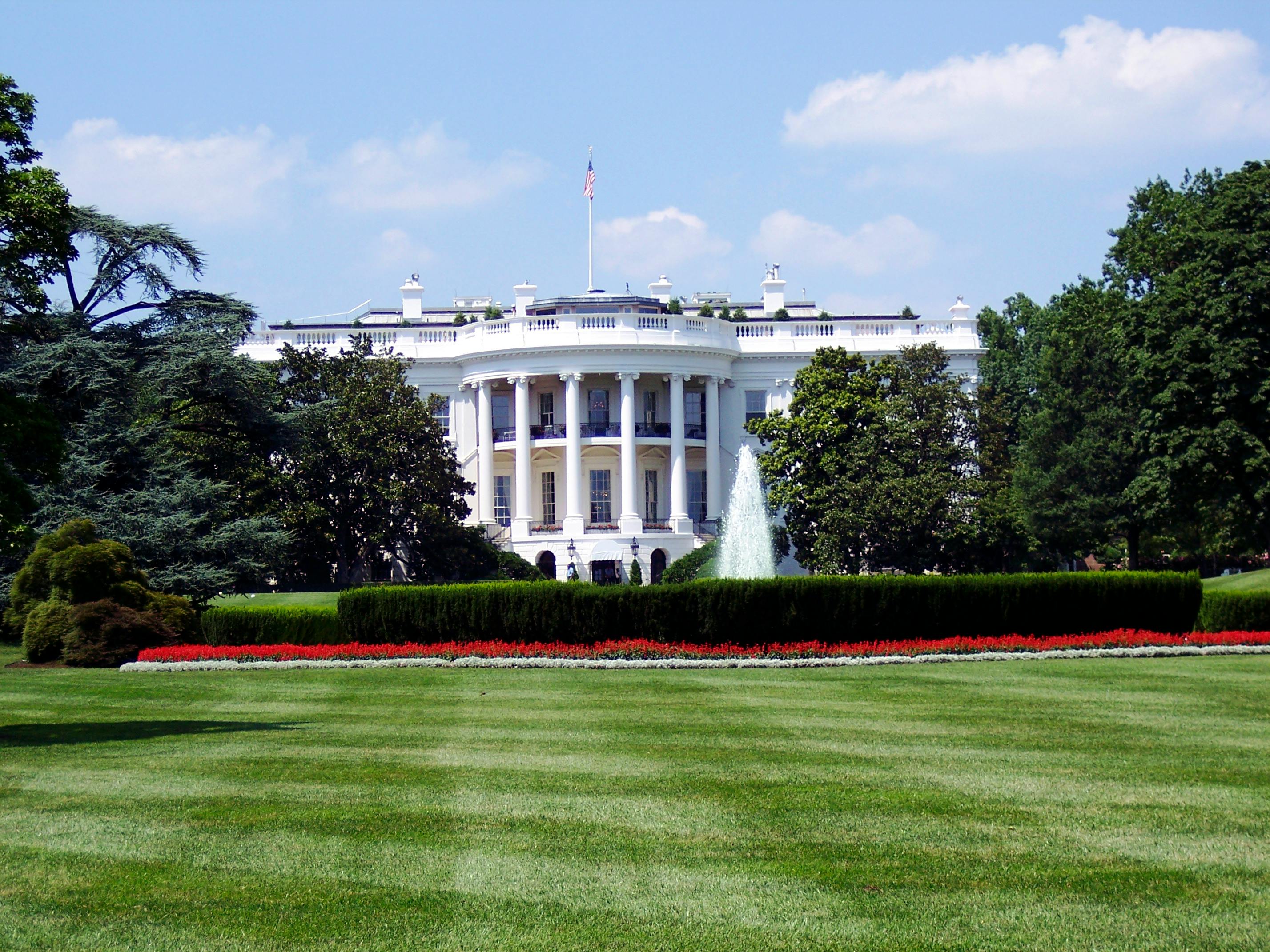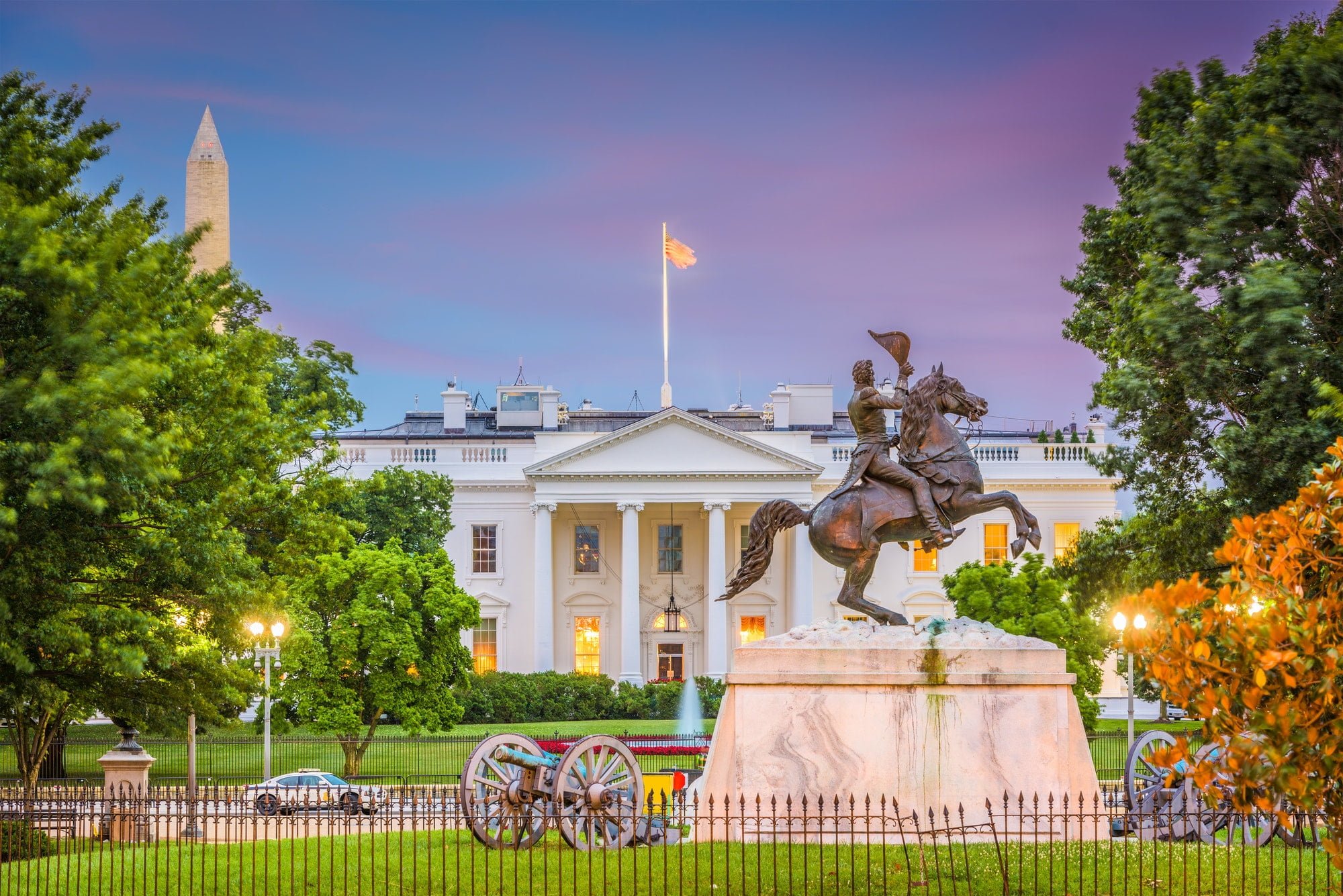White House Architect, Facts & Layout
Table Of Content

After September 11, 2001, this change was made permanent, in addition to closing E Street between the South Portico of the White House and the Ellipse.[109] In response to the Boston Marathon bombing, the road was closed to the public in its entirety for a period of two days. On May 20, 1995, primarily as a response to the Oklahoma City bombing of April 19, 1995, the United States Secret Service closed off Pennsylvania Avenue to vehicular traffic in front of the White House, from the eastern edge of Lafayette Park to 17th Street. Later, the closure was extended an additional block to the east to 15th Street, and East Executive Avenue, a small street between the White House and the Treasury Building. The Cabinet Room, as its name implies, is where the president meets with members of his cabinet, and the Roosevelt Room, where Theodore Roosevelt's office was located, serves as a general-purpose conference room. The Situation Room, known officially as the John F. Kennedy Conference Room, is located in the West Wing basement and actually comprises several rooms. Designated in 1961 by JFK as a space for crisis coordination, it was used by Johnson during the Vietnam War and is where President Barack Obama watched Osama Bin Laden's killing by Navy SEALs.
Hatton Garden
Afterwards, she was accused of stealing government property whereupon an enraged Mary Lincoln prepared a detailed inventory of all the items she had taken with her while leaving the presidential house. The White House received its last significant alterations thanks to Jacqueline Kennedy, wife of President John F Kennedy (1961 — 63). Renowned for her refined taste as also for her beauty, Jacqueline was instrumental in turning the mansion into a center of national culture. She collected enough items of artistic and historic value and then tastefully designed the many rooms of the building with these items. James Hoban was again appointed for the reconstruction of the building which took no less than 5 years. The first president to move into the newly reconstructed building was President James Monroe (1817 — 25).
Presidents
Roosevelt had the West Wing (then known as the Executive Office Building) constructed in 1902 and relocated the presidential offices from the second floor (which was subsequently added to the family living quarters) to the West Wing. As the official workplace and executive residence of the president of the United States, the White House stands as one of the most famous, and recognizable, buildings in the world. But behind its stately neoclassical facade, details of its construction and history are far less well-known. Below, find answers to six common questions about the iconic structure that has served as home to all but one U.S. president. However, by the time President Harry S Truman (1945 — 53) moved into the famous house, the building was already showing serious signs of structural weakness.
Closure of Pennsylvania Avenue
The building underwent major structural changes in the early 1900s under Teddy Roosevelt, who also officially established the “White House” moniker, and again under Harry Truman after WWII. Counting the Oval Office and the Rose Garden among its famous features, it remains the only private residence of a head of state open free of charge to the public. Although a number of proposals were put forward especially in the late 19th century, the building did not undergo any significant alterations until President Theodore Roosevelt assumed office in September of 1901 and moved into the White House.

Native American History Museums in the USA
Accordingly, in 1948, a major renovation plan was adopted with architect Lorenzo Winslow at the helm. All but the outer walls of the building were dismantled and reconstruction took more than 4 years to complete. In 1902, President Theodore Roosevelt began a major renovation of the White House, including the relocation of the President’s offices from the Second Floor of the Residence to the newly constructed temporary Executive Office Building (now known as the West Wing). The Roosevelt renovation was planned and carried out by the famous New York architectural firm McKim, Mead and White. Roosevelt’s successor, President William Howard Taft, had the Oval Office constructed within an enlarged office wing. Original construction of the White House began in October 1792 after President George Washington chose what is now 1600 Pennsylvania Avenue as the location for the new home of the federal government.
The White House Building
Henry Kissinger: Key facts about US diplomat and presidential adviser - Reuters
Henry Kissinger: Key facts about US diplomat and presidential adviser.
Posted: Thu, 30 Nov 2023 08:00:00 GMT [source]
Once the structural work was completed, the interior rooms were rebuilt. The residence was designed by Irish-born architect James Hoban in the Neoclassical style.[4] Hoban modeled the building on Leinster House in Dublin, a building which today houses the Oireachtas, the Irish legislature. Construction took place between 1792 and 1800, with an exterior of Aquia Creek sandstone painted white.

Public access and security
Various proposals were put forward during the late 19th century to significantly expand the President’s House or to build an entirely new residence, but these plans were never realized. The Neoclassical design of the White House is based primarily on architectural concepts inherited from the Roman architect Vitruvius and the Venetian architect Andrea Palladio. Following his April 1789 inauguration, President George Washington occupied two private houses in New York City, which served as the executive mansion. In May 1790, construction began on a new official residence in Manhattan called Government House. The White House and its landscaped grounds occupy 18 acres (7.2 hectares). Since the administration of George Washington (1789–97), who occupied presidential residences in New York and Philadelphia, every American president has resided at the White House.
Daily Caller Retracts Article That Claimed Biden Administration Put A Ban On Religious-Themed Easter Eggs At White House Event - Deadline
Daily Caller Retracts Article That Claimed Biden Administration Put A Ban On Religious-Themed Easter Eggs At White House Event.
Posted: Tue, 02 Apr 2024 07:00:00 GMT [source]
Responding to charges that she had stolen government property when she left the White House, she angrily inventoried all the items she had taken with her, including gifts of quilts and waxworks from well-wishers. The White House is a Georgian mansion in the Palladian style. Reportedly, Abigail was in the habit of using the then still incomplete East Room for hanging out the laundry!
Reconstruction began almost immediately, and President James Monroe moved into the partially reconstructed Executive Residence in October 1817. Exterior construction continued with the addition of the semicircular South Portico in 1824 and the North Portico in 1829. The mansion quickly became a focal point of the new federal city and was symbolically linked to the United States Capitol by way of Pennsylvania Avenue. Following his inauguration in March 1801, Jefferson became the second president to reside in the executive mansion. In keeping with his ardent republicanism, he opened the house to public visitation each morning, a tradition that was continued (during peacetime) by all his successors.
It has hosted longstanding traditions such as the annual Easter Egg Roll, as well as historic events like the 1987 nuclear arms treaty with Russia. The only private residence of a head of state open free of charge to the public, the White House reflects a nation’s history through the accumulated collections of its residing presidents, and serves as a worldwide symbol of the American republic. A final major overhaul took place after Harry Truman entered office in 1945. With structural problems mounting from the 1902 installation of floor-bearing steel beams, most of the building’s interior was stripped bare as a new concrete foundation went in place. The Trumans helped redesign most of the state rooms and decorate the second and third floors, and the president proudly displayed the results during a televised tour of the completed house in 1952. Architect Eric Gugler more than doubled the space of what was becoming known as the “West Wing,” added a swimming pool in the west terrace for the polio-stricken president, and moved the Oval Office to the southeast corner.
The White House belonged to the people, not the president, and the president occupied it only for as long as the people allowed him to stay. The idea of a president refusing to leave the White House after losing an election or an impeachment trial was unthinkable. During the war of 1812, British soldiers set fire to several federal buildings in the capital, including the White House (then Executive Mansion) and the Capitol, prompting the then President James Madison (1809 — 17) to flee the city.
A fire during the Hoover administration in 1929 destroyed the executive wing and led to more renovations, which continued after Franklin Roosevelt entered office. The cornerstone was laid on October 13, 1792, and over the next eight years a construction team comprised of both enslaved and freed African Americans and European immigrants built the Aquia Creek sandstone structure. It was coated with lime-based whitewash in 1798, producing a color that gave rise to its famous nickname. Built at a cost of $232,372, the two-story house was not quite completed when John Adams and Abigail Adams became the first residents on November 1, 1800. Dickens was not the only foreign visitor to be disappointed with the White House.
In fact, President Truman spent most of his term living elsewhere due to the major extent of the renovations undertaken. Today, tours of what is undoubtedly the most iconic residence in the US are a precious commodity. Nonetheless, the visitors centre and surrounding area give a sense of the White House’s role within US history. It has been used by nearly every president since, with the exceptions of Lyndon Johnson, Richard Nixon and Gerald Ford.
According to the official White House web page, it’s home to 28 fireplaces, eight staircases, three elevators, 412 doors and 147 windows—and has a kitchen equipped to serve full dinner for up to 140 guests, or hors d'oeuvres for 1,000-plus visitors. And when it gets a new coat of paint every four to six years? The second president of the United States, John Adams, moved into the still-unfinished presidential mansion on November 1, 1800.
The building was designed by architect James Hoban, whose plans were selected out of nine proposals, and was loosely based on the neo-classical Leinster House in Dublin. The practice continued until 1885, when newly elected Grover Cleveland arranged for a presidential review of the troops from a grandstand in front of the White House instead of the traditional open house. President Bill Clinton briefly revived the New Year's Day open house in his first term. The White House and grounds cover just over 18 acres (about 7.3 hectares).
Comments
Post a Comment